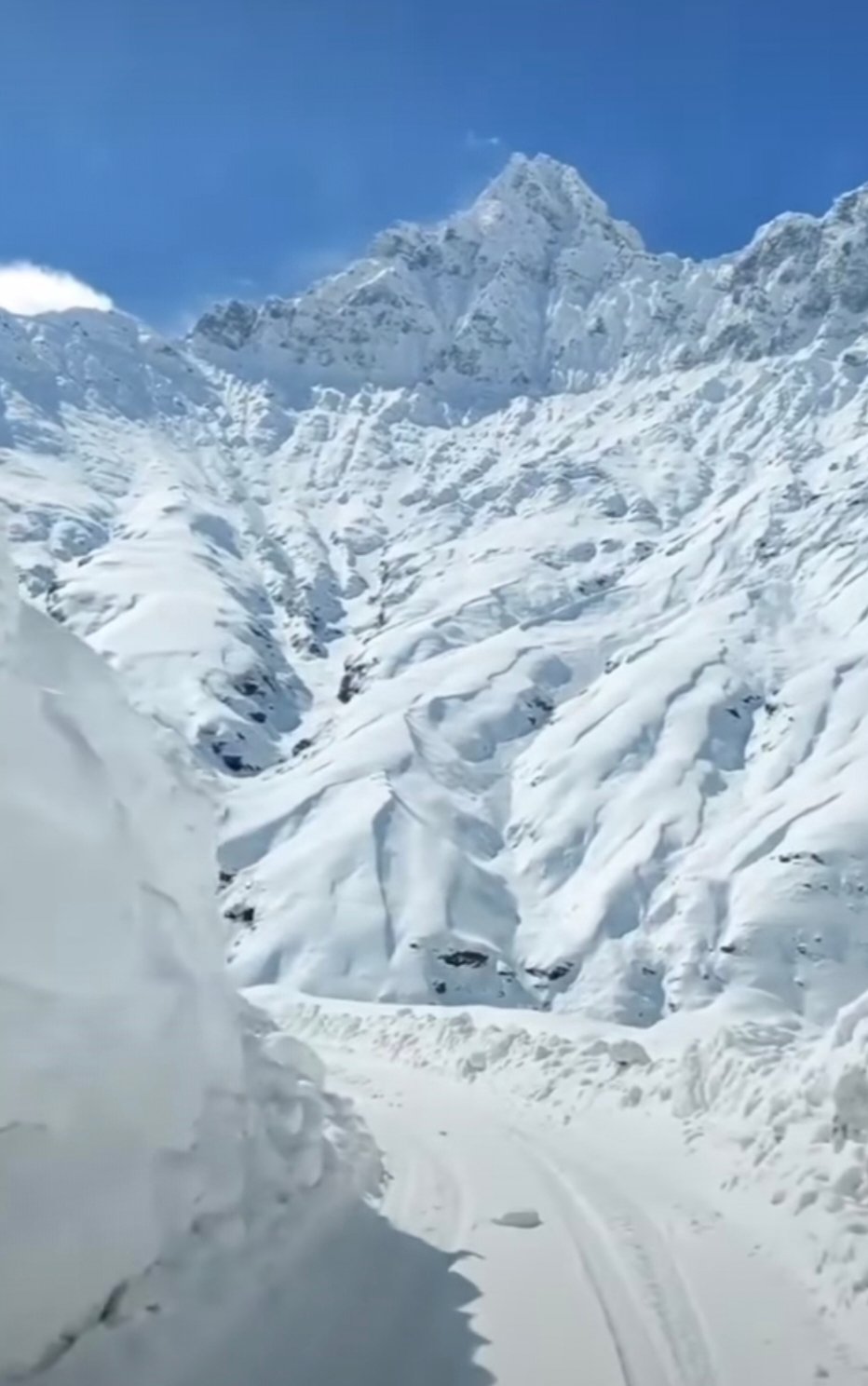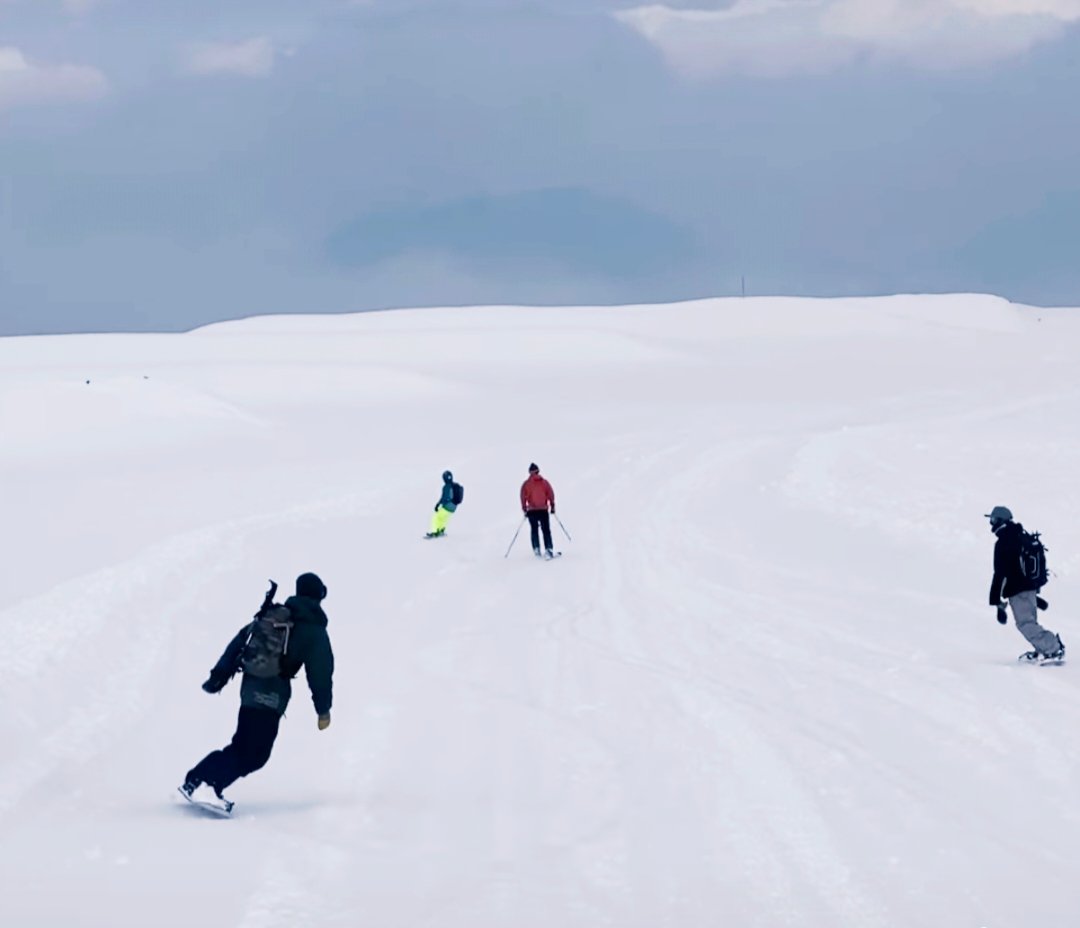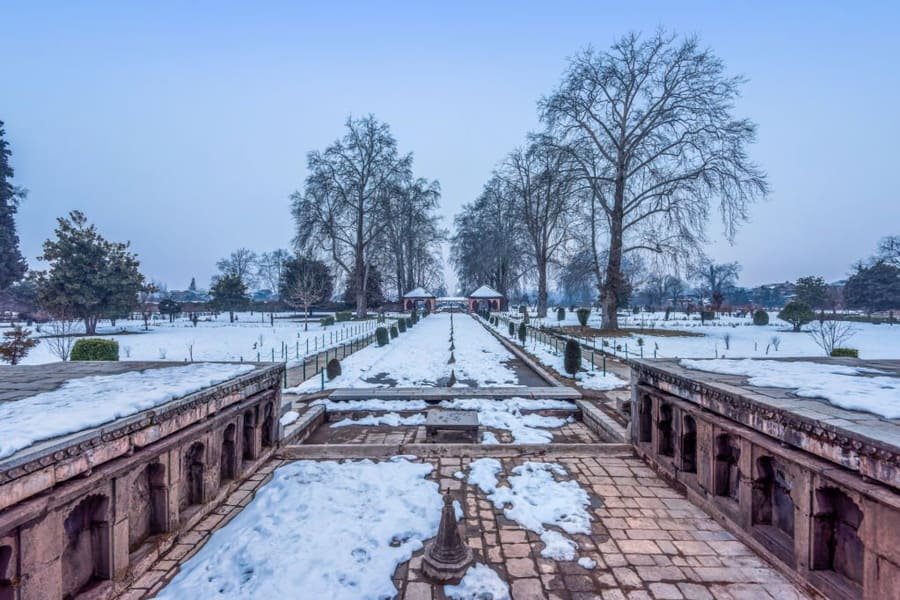Gulmarg
56 km from Srinagar. The town is situated in the Pir Panjal Range in the Western Himalayas and lies within the boundaries of Gulmarg Wildlife Sanctuary.
According to CNN, Gulmarg is the "heartland of winter sports in India" and was rated as Asia's seventh best ski destination. The town is accessible from Srinagar by road via Tangmarg. The road climbs uphill in the last 12 kilometres to Gulmarg passing through forests of pine and fir. Winter sports like skiing, tobogganing, snowboarding and Heli-skiing take place on the slopes of Mount Apharwat reachable by a Gondola lift.
Gulmarg is a compound word or portmanteau of two Persian words Gul and Marg. Gul means flowers and Marg means meadow? So, Gulmarg is a meadow of flowers. The credit for discovering the charms of Gulmarg first time in history has been given to Yousuf Shah Chak, the last Chak ruler who reigned from 1579 to 1586 AD.
Built by the French company Pomagalski, the Gulmarg Gondola is one of the highest in the world reaching 3,979 metres. The two-stage ropeway ferries about 600 people per hour between Gulmarg and a shoulder of nearby Apharwat Peak (4,200 metres (13,800 ft)). The first stage transfers from Gulmarg at 2,600 metres (8,500 ft) to Kongdoori at 3,080 metres (10,100 ft). The second stage which has 36 cabins and 18 towers, takes passengers to a height of 3,950 metres (12,960 ft) on the Apharwat Peak 4,200 metres (13,800 ft). A chair lift system connects Kongdoori with Mary's shoulder for taking skiers to higher altitudes. The high inflow of tourists has had an effect on the fragile eco-system of Gulmarg and activists have demanded tighter regulation to save the environment of the area from over-tourism
Yousuf Shah Chak, who ruled Kashmir from 1579 to 1586, frequented the place with his queen Habba Khatoon and renamed it 'Gulmarg' ("meadow of flowers"). Wild flowers of 21 different varieties were collected by the Mughal emperor Jahangir for his gardens in Gulmarg. In the 19th century, British civil servants started using Gulmarg as a retreat to escape summers in North Indian plains. Hunting and golfing were their favourite pastime and three golf courses were established in Gulmarg including one exclusively for women. One of the golf courses survives and at an altitude of 2,650 metres (8,690 ft) is the world's highest golf course. In 1927, British established a ski club in Gulmarg and two annual ski events were hosted one each during Christmas and Easter. Central Asian explorer Aurel Stein also visited Gulmarg during this period.
After the end of British rule in India, Gulmarg became a part of the independent princely state of Kashmir and Jammu. Pakistan planned an invasion of the state called Operation Gulmarg. One of the routes used by the invading militia of Pathan tribesmen, armed and supported by Pakistani regular troops, passed through the Hajji Peer pass and Gulmarg onto the state capital Srinagar. Gulmarg fell to the invading army, but the Indian army led by the 1 Sikh Regiment, which had been airlifted to Srinagar only after the Dogra ruler of the state Maharaja Hari Singh had signed an Instrument of Accession with India on 26 October 1947, successfully defended the outskirts of Srinagar. Thereafter, Indian counterattacks pushed the tribesmen back and many towns including Gulmarg were recaptured. In 1948, Indian Army established a ski school in Gulmarg which later became the High Altitude Warfare School of the Indian army specializing in snow–craft and winter warfare. On 1 January 1949, the war ended under UN supervision and a Ceasefire line (CFL), which was rechristened the Line of Control (LOC) by the Shimla Agreement of 1972, came into being close to Gulmarg.
After Indian Independence, Indian planners sought to develop a destination for Winter sports in India. The Department of Tourism of the Government of India invited Rudolph Matt, in 1960 to select a suitable location for such purpose. Matt zeroed in on Gulmarg as a suitable location for the development of a winter sports destination in India. In 1968, the Institute of Skiing and Mountaineering was established in Gulmarg to train ski instructors. Over the next decade, Indian planners invested ₹30 million (US$380,000) to transform Gulmarg into a world-class ski destination. Gulmarg became a centre for skiers from Asian nations. In mid-1980s, Heli-skiing was introduced in Gulmarg in collaboration with the Swiss skier Sylvain Saudan of Himalaya Heli-Ski Club of France. In the 1990s, the rise of militancy in Jammu and Kashmir affected tourism in Gulmarg. With the abatement of terrorism in the area, tourism started to recover in late 1990s. Work on the cable car project between Gulmarg and Apharwat Peak, which was commissioned in 1988 by Government of Jammu and Kashmir but was subsequently abandoned due to militancy in 1990, was resumed in 1998. In May 1998, Phase 1 of the project, between Gulmarg and Kongdori, began its commercial operation. In May 2005, Phase 2 of the project was also inaugurated, making it one of the longest and highest ropeways of Asia. The chairlift installed as a part of Phase 3 of the project began its operations in 2011. The National Winter Games were held in Gulmarg in 1998, 2004 and 2008. In 2014, Government of Jammu and Kashmir drafted a Master Plan–2032 for Gulmarg. The plan includes development of a solid-waste treatment plant on 20 acres of land close to Gulmarg



Yes, travelling to Kashmir is absolutely safe. However, don’t be shocked by the abundance of military checkpoints, tanks on the side of the road, military trucks and heavy armed soldiers roaming down the streets.
Travelling to some parts of Ladakh that lie close to the borders of China and Tibet do require a permit.
The distance between Kashmir and Delhi is approximately 842 kilometers. You can take a flight from New Delhi to Srinagar that will take around 1 hour and 25 minutes. While travelling via train will take you 7 hours and 25 minutes.

Summer in Kashmir is quite different than that of the rest of the country. It is marked by pleasant and comfortable weather. It begins in June and ends in Aug. Those visiting it from relatively warmer areas will find it cold enough in the evenings & at night ,day time its quite warm . The temperature during this season in Gulmarg fluctuates between 12°C to 30°C, One can explore the valleys of Gulmarg.

The winter season in Kashmir begins from December to February. with temperature dipping -3 to 7 degree ( real warm clothes are must during this period of time, This is ideally the best tourism season of Kashmir for snow lovers. Tourists can enjoy the snowfall, Gondola riding, skiing and many other adventure activities in this season in Kashmir. For family & honeymoon vacationers, this the best time to plan their visit Kashmir.

The Kashmir Valley has entered into autumn season, which usually falls during September-November. The temperature gets cold post lunch ,a warm clothing is recommended, The leaves of trees turn golden and reddish. The word in Kashmiri language for autumn is 'harud'.

Spring in Gulmarg is pleasant during noon and cold too with temperature as low as 2 to high of 16 degree, explore Meadow Of Flowers , The blossoms of spring and the cool weather of summer creates the perfect season to visit Kashmir during this time.
Loretta Shelton -
25 January, 2022Lorem Ipsn gravida nibh vel velit auctor aliquet.Aenean sollicitudin, lorem quis bibendum auci elit consequat ipsutis sem nibh id elituis sed odio sit amet nibh vulputate cursus a sit amet mauris.Praesent explicari id eum.